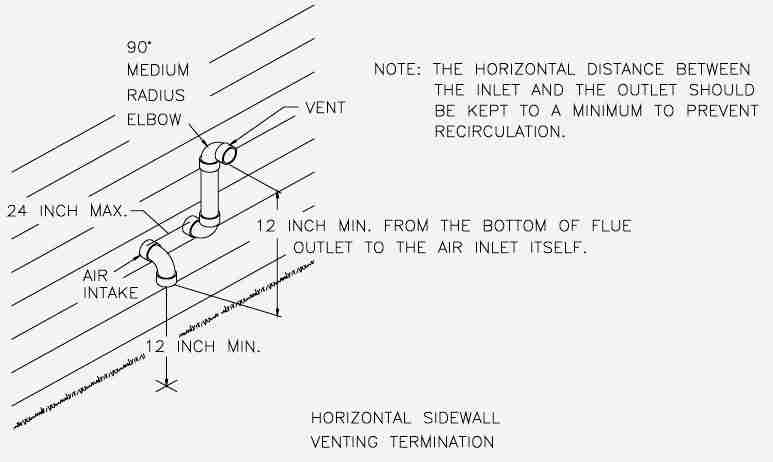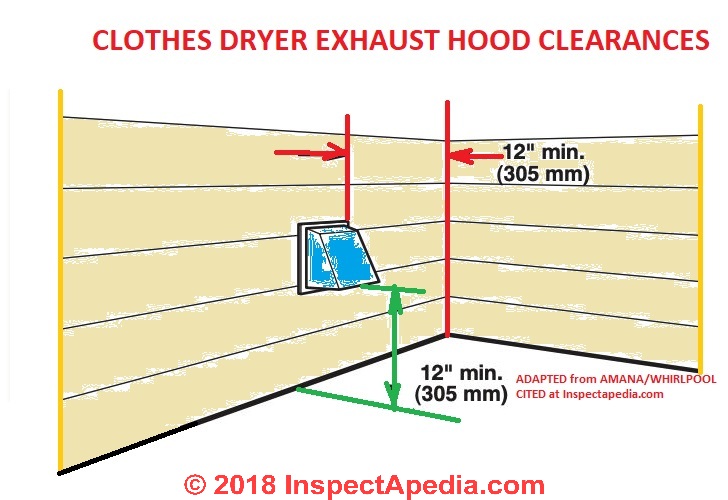This article gives typical clearance distance requirements between the termination cap of a gas fireplace or fireplace insert and other building or site features such as windows doors other mechanical system components air intakes.
High efficiency furnace exhaust direct vent termination clearances.
Vent pipe blocking the exhaust flow.
Gas fireplace direct vent termination cap clearance distances clearances between the gas fireplace exhaust vent and other building components or features.
In all areas exhaust vents should be at least 1 foot above roof surface.
Direct vent chimneys or exhaust for heating appliances.
This article describes common mistakes found in both side wall vent systems for conventional mid range efficiency heating boilers furnaces water heaters and also mistakes in low temperature side wall vent systems used by high efficiency or condensing boilers furnaces water heaters.
Special retrofit situations may require relining of masonry chimneys if the furnace is removed from a common vent system with another atmospheric appliance.
This article describes side wall vent systems for conventional mid range efficiency heating boilers furnaces water heaters we include for comparison low temperature side wall vent systems used by high efficiency or condensing boilers furnaces water heaters.
Exhaust vents must not be allowed to be obscured or hidden by vegetation.
Specifications errors in direct vent side wall vent condensing boiler or furnace vent installations.
Gas appliance direct vent clearances distances from direct gas vent to building features sidewall vent direct vent direct exhaust systems for gas fired heaters water heaters other appliances.
Table illustrations of the required space between a direct or side wall vent for a gas fired heating appliance and building windows doors corners gas meter air intakes sidewalks balconies.
Vegetation must not be allowed to grow within 3 feet of an exhaust vent.
12 the gross area of the screens or grilles installed in intake and exhaust openings shall be three times that of the duct served.
Traditional gas fired forced air furnaces produce hot combustion exhaust gasses and therefore need metal vent pipes or chimneys.
In high efficiency models the lower temperature of the exhaust can allow moisture a by product of combustion to condense in the flue especially when outdoor temperatures drop into the 20 s or below.
14 the net free area of an air intake or exhaust outlet shall be equal to or greater than the cross sectional area of the duct served.
See direct vents side wall vents for a complete table of recommended clearance distances from a direct vent gas appliance terminal to other building.
American gas association has certified the design of condensing furnaces for a minimum of 0 clearance from combustible materials with a single wall plastic vent pipe.
In contrast modern high efficiency condensing furnaces exhaust much cooler gasses and need only plastic pipe materials such as pvc cpvc or abs for their exhaust vents some high efficiency furnaces also include a plastic pipe for intake area and all types.
High efficiency or condensing furnaces exhaust the combustion gases and bring in fresh.








